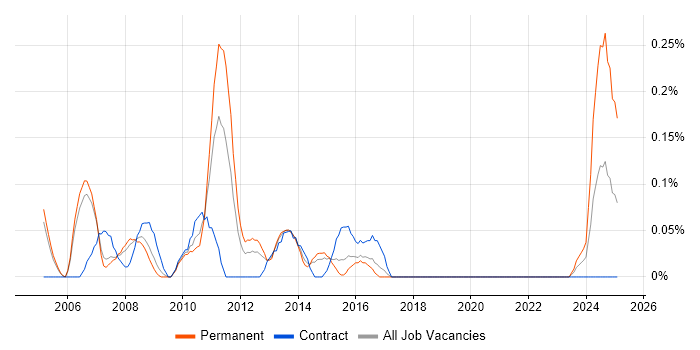SAP Business Consultant
Berkshire > Reading
As of 21 December 2025, there is not enough information available from job vacancies posted within the last 6 months to determine the median SAP Business Consultant salary in Reading.
| 6 months to 21 Dec 2025 |
Same period 2024 | Same period 2023 | |
|---|---|---|---|
| Rank | - | 77 | - |
| Rank change year-on-year | - | - | - |
| Permanent jobs requiring an SAP Business Consultant | 0 | 4 | 0 |
| As % of all permanent jobs in Reading | - | 0.48% | - |
| As % of the Job Titles category | - | 0.52% | - |
| Number of salaries quoted | 0 | 0 | 0 |
| Median annual salary (50th Percentile) | - | - | - |
| Berkshire median annual salary | - | - | - |
All Permanent IT Job Vacancies
Reading
For comparison with the information above, the following table provides summary statistics for all permanent IT job vacancies in Reading. Most job vacancies include a discernible job title that can be normalized. As such, the figures in the second row provide an indication of the number of permanent jobs in our overall sample.
| Permanent vacancies in Reading with a recognized job title | 535 | 764 | 894 |
| % of permanent jobs with a recognized job title | 93.04% | 92.05% | 92.83% |
| Number of salaries quoted | 349 | 362 | 585 |
| 10th Percentile | £29,800 | £37,000 | £32,500 |
| 25th Percentile | £35,000 | £48,925 | £38,130 |
| Median annual salary (50th Percentile) | £52,500 | £60,000 | £55,000 |
| Median % change year-on-year | -12.50% | +9.09% | -6.38% |
| 75th Percentile | £65,000 | £80,000 | £68,750 |
| 90th Percentile | £80,000 | £93,750 | £83,750 |
| Berkshire median annual salary | £49,000 | £65,000 | £55,000 |
| % change year-on-year | -24.62% | +18.18% | -4.35% |
SAP Business Consultant
Job Vacancy Trend in Reading
Historical trend showing the proportion of permanent IT job postings featuring 'SAP Business Consultant' in the job title relative to all permanent IT jobs advertised in Reading.

SAP Business Consultant
Salary Trend in Reading
Salary distribution trend for SAP Business Consultant job vacancies in Reading.

